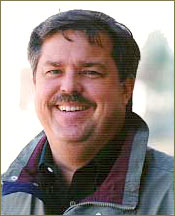|

|
 |
Q & A Regarding The THP's Stance On a
Mixed Meet at Retama in 2002
At the most recent meeting of the Texas Racing Commission, the Texas Horsemen's Partnership opposed a request by Retama Race Park to conduct a mixed meet next year rather that the straight quarter horse meet like they conducted this year. This has caused some horsemen to ask why the HBPA would take this position. Therefore, we asked THP Executive Director Tommy Azopardi some questions to clarify this issue: Q: Why did the THP oppose a mixed meet at Retama Park next year when the track has stated that they needed a mixed meet format? A: First, let me explain that the THP is composed of two organizations. One is the Texas Horsemen's Benevolent and Protective Association (THBPA), which represents owners and trainers of American Quarter Horses, Arabians, Paints and Appaloosas. The other organization is the Texas Thoroughbred HBPA, Inc. (Thoroughbred HBPA) and they represent owners and trainers of Thoroughbreds. Both of these organizations felt that it was in the best interest of their members to oppose a mixed meet, even though the reasons were different for each group. Q: Why would the THBPA be concerned about a mixed meet? A: The last time that Retama Park ran a mixed meet was in 2000. There were over 1,000 Quarter horses that were excluded from entries during that meet. There were also over 30 horses that had a "zero" date when the meet ended. In other words, it was hard, if not impossible, to get a race for your Quarter Horse during that meet. The Retama spring meet is already the shortest of any Class I track for Quarter Horses. The Board of the THBPA felt that it was not right to support giving 20% to 30% of those few racing opportunities away. However, this year there were enough races to satisfy everyone and the purses were good. Q: Was that the only reason that they opposed the mixed meet? A: No, actually there is also a problem with the allocation of stalls during a mixed meet. Due to the fact that Retama has had great success as a training center between live meets, they had to allocate approximately 30% of the stalls to Thoroughbreds. This creates a shortage of stalls available for the Quarter Horse trainers and many of them have to split their stables or choose to run in another state. We have actual knowledge of leading Quarter Horse stables that had to be split between Remington Park in Oklahoma and Retama Park. The trainers assured us that those horses would have stayed at Retama had stalls been available. Q: What about the claims that a mixed meet helps get the simulcast signal into more outlets, which helps both breeds? A: In 2000 Retama only ran two Thoroughbred races per race day during the mixed meet. I seriously doubt that any facility would take the entire Retama Park race card just because there are two Thoroughbred races with average purses of $4,000. Plus, you may not realize this, but when you export a live meet via simulcast, all of the money wagered on a specific breed goes only to that breed. For example, when Retama exports a mixed meet signal the entire share of the purse money derived from wagers on Quarter Horses goes to the Quarter Horse purse account and vice-versa. Q: Doesn't that add up to quite a bit of money, though? A: Not really. Don't forget that horsemen only receive about one penny of every dollar wagered on our exported signal for purses. You have to have a really popular signal to make any significant money from exporting. Where the horsemen make their real money is on bets placed at our tracks on the live product or imported races. We make about eight cents on the dollar wagered. Q: Why did the Thoroughbred HBPA oppose the mixed meet? It appears that it is to their benefit to have more opportunities to run and a place to stay. A: It is great for horsemen with Thoroughbreds to have a place to stay and extra races to run at when the Lone Star Park meet is going. We all recognize that at times it is difficult to get in and compete at Lone Star Park with the quality of horses that run there. However, there is a problem that exists when you run Thoroughbred races outside the actual Thoroughbred meet. Every dollar that is spent during the spring meet is a dollar less that you have to spend during the Thoroughbred meet. We have heard from owners and trainers of Thoroughbreds for years that the purses are too low at Retama. This has forced many Texas horsemen to send their horses out of the state to run during the fall. Q: How will not having a mixed meet affect purses? A: Take a look at this year's condition book! For the first time Retama's Thoroughbred purse structure is over $100,000 per day. This has attracted some of our horsemen to stay that have gone to Louisiana Downs in the past years. The horses are better at Retama Park this year, and handle was up 27% from last year after the opening weekend. The better handle will relate to higher purses for horsemen. It is an upward spiral effect that is beneficial to horsemen and the racetrack. Q: Are you certain that the purses would drop back below $100,000 if there were a mixed meet? A: Unquestionably. The purses are just barely above $100,000 per day now. As I stated earlier, every dollar spend on Thoroughbreds during the mixed meet is a dollar less available during the Thoroughbred meet. If Retama runs three Thoroughbred races per day during the 33-day mixed meet and each one has an average purse of $4,000 that is approximately $400,000 dollars that is taken away from horsemen competing in the Thoroughbred meet. In 1999 the amount of average daily purse money from earned purses was only $69,997 per day! In 2000 it amounted to only $86,538 per day, which is the amount that horsemen were complaining about. Q: What about the opportunities that you spoke about earlier that are good to have for some horsemen that can't compete at Lone Star Park? A: First of all, with the increased competition from Louisiana due to their higher purses as a result of slot machines and since Arlington Park has re-opened, the competition at Lone Star Park will get easier. However, Manor Downs has been granted five weeks of Thoroughbred racing during the toughest part of the Lone Star Park meet. That will give those horses a place to run. Q: Do you actually think Manor will run any of those days next year? A: I know there is a lot of skepticism about Manor. I have had it myself in the past, but Manor has finished its improvements, and the Texas Racing Commission has approved all of the work. Manor is ready to run now, and they are also leaning toward keeping the stable area open as a training center. At this point, I am confident that Manor will run next year. There is also the possibility that Austin Jockey Club may open in late 2002 or early 2003 and that will give more opportunities for horsemen. Q: Do you believe Manor will actually keep their facility open year-round as a training center? A: They plan to try, but I have been assured that they will keep the stable area open and access to the track for training until at least the beginning of the Retama Thoroughbred meet, which starts August 1. Q: If a mixed meet is bad for both groups of horsemen, then why does Retama want to conduct one? A: I think it has to do with the fact the Retama Park has a very profitable training center. It has been a win-win situation for horsemen and the racetrack, and Retama is concerned that if they have to turn out horsemen that have made Retama Park their home base, they might not get them back. I appreciate this concern, and if it were not detrimental to live racing, I would whole-heartedly support it. Our responsibility, though, is to represent horsemen in racing matters. Q: Is there anything that can be done to help those horsemen that don't have anywhere else to stable if there is not a mixed meet? A: Perhaps. I am certainly willing to work with Retama, those horsemen, and other racetracks, but jeopardizing the success of live meets is not the answer. Q: Do you think the organizations in the THP will ever support a mixed meet? A: I know that every decision that is made by our Board members is done
so with the horsemen in mind. Our Board members are owners and trainers
elected by owners and trainers. They interact with fellow horsemen everyday
and get tons of input. If it makes sense in the future to have a mixed
meet, I know they will support it. I also know that mixed meets have met
with favorable review at the proposed Class II tracks. Our Board members
are not opposed to a mixed meet just because they don't want to see different
breeds on the same race card. They just have to balance the needs of all
of our members, both large and small, and provide the best opportunities
and most purse money possible . |
| Back to News |
BENEVOLENCE | BENEFITS | GROOM ELITE | PERSONNEL | LINKS | CONTACT US
